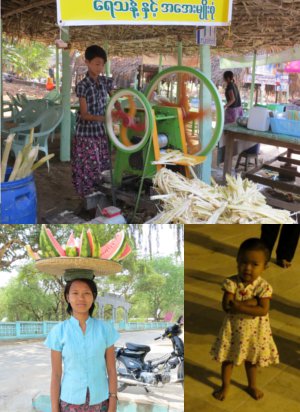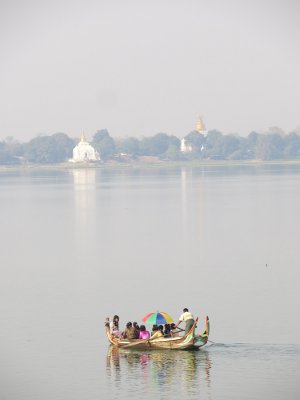The People of Myanmar
The possibility to visit Myanmar was a surprising revelation along our travels. We both had dreamed of coming to this country but gave up our hopes before the beginning of the journey due to the complicated visa process at that time.
Since the beginning of the trip, we felt fascinated by the authentic look of Myanmar but more than anything, we fell in love with their people. Everywhere we went, they were always genuinely interested in helping and interacting with us. Three Burmese expressions mingguhlaba (hello), jayzu dingbade (thank you), and ta-ta (goodbye) were enough to build a bridge of communication with the locals in each town we visited. Children and adults seem happily surprised after hearing us “talking” their language and would reply with laughs of encouraging joy.


While traveling around Yangon by train, Hlatoo, a local commuter, spontaneously started a pleasant conversation with us about his city. Zanaka, a Buddhist monk, Yeyint and Alphakhant, two Odontology students, asked us if they could join us on our walk to the top of Mandalay Hill Temple to practice their English and talk about different topics, including the happy news of a 2015 democratic election in Myanmar. After hearing us talk in Spanish, Maylay, a passenger on our bus coming from Bagan, asked about our nationalities and was excited to practice Spanish with us. She talked to us about her favorite latin music while sharing a taxi ride to our final destination. Similar to the people mentioned above, we encountered so many more friendly locals along the way, which regardless of our language barriers were always kind to offer us their gentle look, smile, and even start a conversation.
In Yangon, Mandalay, and Bagan the warm feeling of Myanmar’s people was a constant invitation to stay. We were respectful spectators of their customs and traditions, which were expressed daily in men’s long skirts (longyi), the red teeth and red spit on the concrete floor from betel nut chewing tobacco, tree extract facial painting, children singing free of shame, woman carrying heavy products on their heads to sell, men playing traditional street games, and people’s gestures. Myanmar’s body language is also special, they have their own ways of shaking hands or handing things to others (crossing one hand over the opposite elbow or holding the object with both hands), saying no (waiving an open hand), and requesting waiters’ attention at restaurants (making a kissing sound).





There was only one thing that erased our smiles everywhere we went: children working instead of having the opportunity to get an education. Seeing these children at restaurants, bars, hostels, streets, and tourist attractions left us with a feeling of hopelessness for what could really be a better future for Myanmar… We struggled many times with the decision of becoming customers at places and supporting something we are in disagreement, but this reality is seen throughout the country and it was difficult to avoid.
The country is rapidly changing. Myanmar now has a democratic government in place and has opened the borders to foreigners. We left Myanmar with a great desire of staying longer and the anxiety of thinking about the way in which western influence and massive tourism could potentially change the kindness heart of their people. Only time will tell us about the future, but the Myanmar we enjoyed will be eternally alive in our memories!
